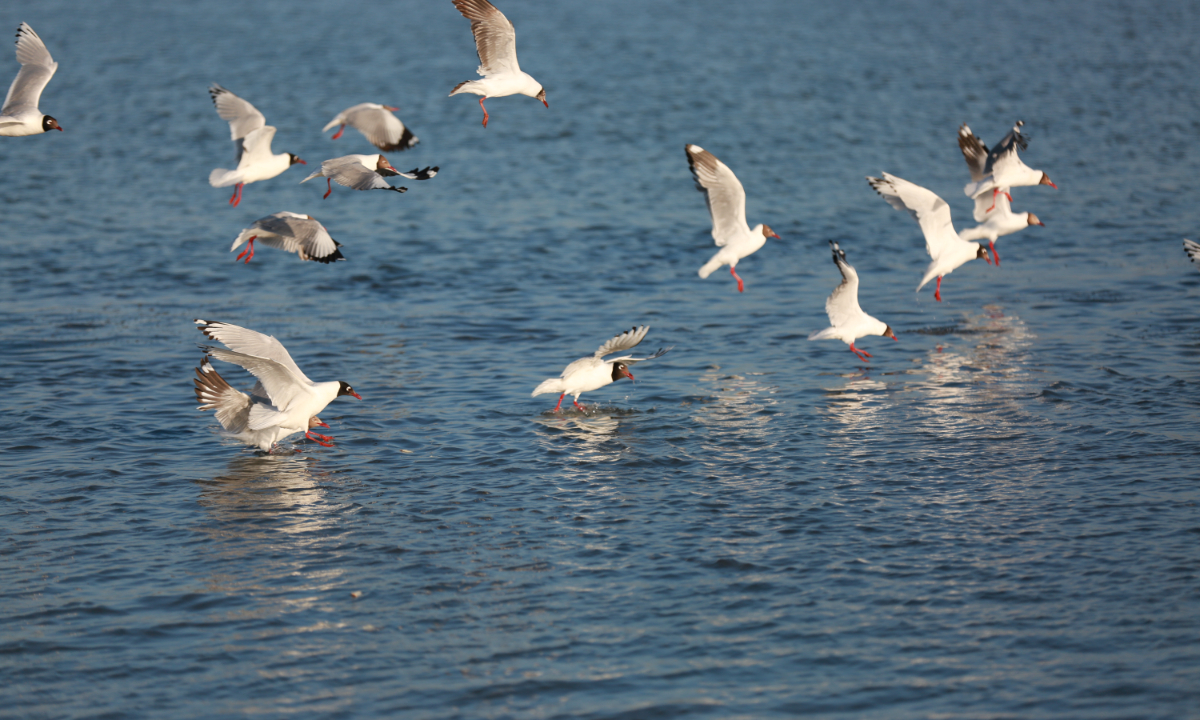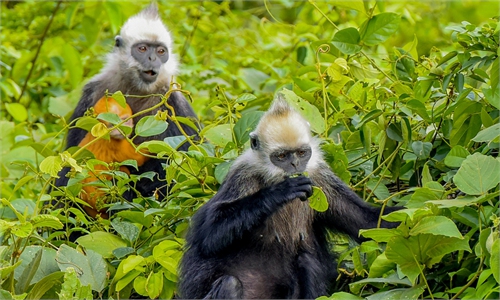ARTS / CULTURE & LEISURE
Wildlife in China: Conservation efforts help relict gull population increase fourfold in China

A group of relict gulls fly over a lake in the Shaanxi Hongjiannao National Nature Reserve. Photo: VCG
Previously experiencing constant lower water levels and pollution, a freshwater lake in Northwest China's Shaanxi Province has once again become home to thousands of endangered migratory birds after years of treatment.
The Shaanxi Hongjiannao National Nature Reserve, with the Hongjiannao Lake at its core, is located in the northern part of Shaanxi Province.
With a total area of 107.68 square kilometers at the junction of Shaanxi and Inner Mongolia Autonomous Region, this wetland is one of the main habitats for relict gull, or Central Asian gull, a migratory bird species listed on the International Union for Conservation of Nature's Red List of Threatened Species.
The relict gull is a migratory species that breeds inland in places including Kazakhstan, Mongolia and the northern part of China, flying and spending their winters around the Bohai Sea in eastern part of China.
In spring, they fly to desert lakes in northwestern China to breed.
These birds can sometimes be seen in Beijing in late March and early April when they begin their migration.
However, as it is one of the main wetland habitats for relict gulls, the deterioration of the environment around Hongjiannao Lake once cast a shadow over the species.
In 2010, 7,700 baby relict gulls were bred within a year. However, after 2012 the number of mid-lake islands where the relict gulls made their nests kept decreasing. Due to this reason, the number of the baby relict gulls dropped to 2,000 in 2015.
To protect the environment, the provincial-level Hongjiannao Nature Reserve was established.
In 2018, it was promoted to a national-level reserve. The Hongjiannao National Nature Reserve has adopted a series of ecological restoration measures, such as river regulation and water quality monitoring and control.
According to the data obtained from China's Ministry of Ecology and Environment, in 2017, there were only dozens of relict gull nests. Yet in 2019, the number of nests increased to 800, and in 2022 further increased to 4,700, with over 10,000 fledglings seen around the lake.

